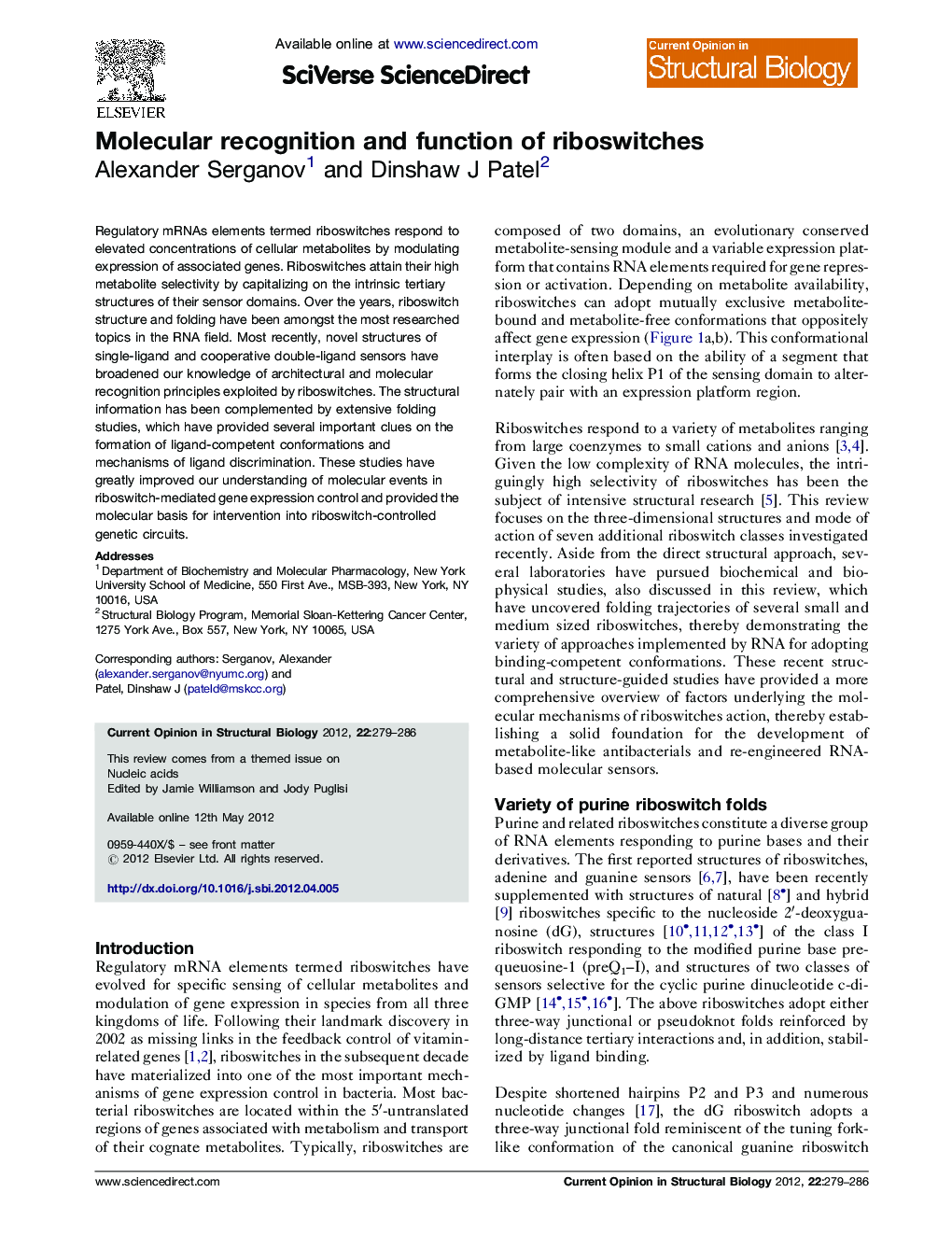| Article ID | Journal | Published Year | Pages | File Type |
|---|---|---|---|---|
| 1979079 | Current Opinion in Structural Biology | 2012 | 8 Pages |
Regulatory mRNAs elements termed riboswitches respond to elevated concentrations of cellular metabolites by modulating expression of associated genes. Riboswitches attain their high metabolite selectivity by capitalizing on the intrinsic tertiary structures of their sensor domains. Over the years, riboswitch structure and folding have been amongst the most researched topics in the RNA field. Most recently, novel structures of single-ligand and cooperative double-ligand sensors have broadened our knowledge of architectural and molecular recognition principles exploited by riboswitches. The structural information has been complemented by extensive folding studies, which have provided several important clues on the formation of ligand-competent conformations and mechanisms of ligand discrimination. These studies have greatly improved our understanding of molecular events in riboswitch-mediated gene expression control and provided the molecular basis for intervention into riboswitch-controlled genetic circuits.
► Riboswitches utilize different conformations and pockets for ligand binding. ► Riboswitch structures provide molecular basis underlying the cooperative response. ► Ligand selectivity is achieved by shape complementarity and specific interactions. ► Riboswitches employ ‘conformational selection’ to bind their cognate ligands. ► Different riboswitch classes follow distinct folding trajectories.
